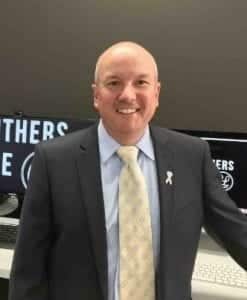Paul Crake and I recently had the pleasure of working with a very skilled, thoughtful and prepared Driver-Trained Occupational Therapist who is based in the Central West of NSW, Elissa Clark.

Also working with our client Tracey was specialist Driving Instructor, Matthew Irvine. Matthew is the Director of the Calare Academy of Road Safety and covers “Bathurst, Orange, Lithgow and beyond”.
We both came away thinking how well the session was managed, and thought a quick summary might be valuable for other specialist Driving Instructors in our network.
Our reflections can be broken down into three main areas:
Proper Preparation
[unordered_list style=’circle’ number_type=’circle_number’ animate=’no’ font_weight=”]
- Planning: The Driver-Trained Occupational Therapist did an excellent job of co-ordinating the right team of people and resources:
- Client
- Specialist Driving Instructor
- Experts in high level driving modifications
- Total Ability High Level Assessment Vehicle
- Communication: Clarity and confirmation of availability, date, time, place
- Engagement: Engaging with the driving modification experts so that there is a good understanding of what equipment options are on board the High Level Assessment Vehicle ahead of time
[/unordered_list]

Effective Team Briefing
[unordered_list style=’circle’ number_type=’circle_number’ animate=’no’ font_weight=”]
- Elissa’s initial briefing set the tone for the session. It showed a high level of care, preparation and professionalism and created an environment where all team members made a conscious effort to hit the same standards.
- At the beginning of the session Elissa provided:
- An introduction of each person and their role
- An overview of the client (disability and relevant medical history, the functional impact of the client’s condition for driving, the clients goals and specific driving modifications that would be a suitable option for trial)
- The expectations of the assessment and how the ‘driving team’ can meet these expectations for the client.
- On completion of the assessment, Elissa led a discussion with the ‘driving team’ and client, which included:
- A summary of the assessment findings
- Opportunity for questions or comments from the client and ‘driving team’
- Recommendations and what the next steps in the client’s journey will look like.
[/unordered_list]
Client-centred Approach

[unordered_list style=’circle’ number_type=’circle_number’ animate=’no’ font_weight=”]
- The physical and psychological care for the client in this case was evident in every respect, from positioning the High Level Assessment Vehicle in a shaded area to considering where the transfer into the powered chair for the driving assessment would take place.
- Elissa ensured that at every point, the thoughts, feelings, reactions, preferences and ideas being expressed by the client were heard, recorded and responded to appropriately.
- Getting the most out of your time with the Total Ability High Level Assessment Vehicle often requires a gradual process for trialling equipment, starting with the ‘lower level’ equipment and moving up the scale until the appropriate level is reached. Matthew did a terrific job in this respect, and at all times Tracey, (our client), was informed and in control.
- By ensuring the ‘driving team’ communicate effectively with the client, explain processes, seek the client’s feedback and relate all discussion back to the client’s driving goals.
[/unordered_list]
Click here to read more information on accessing the Total Ability High Level Assessment vehicle.
You may also like to get our FREE NDIS Guide to Vehicle Modifications







